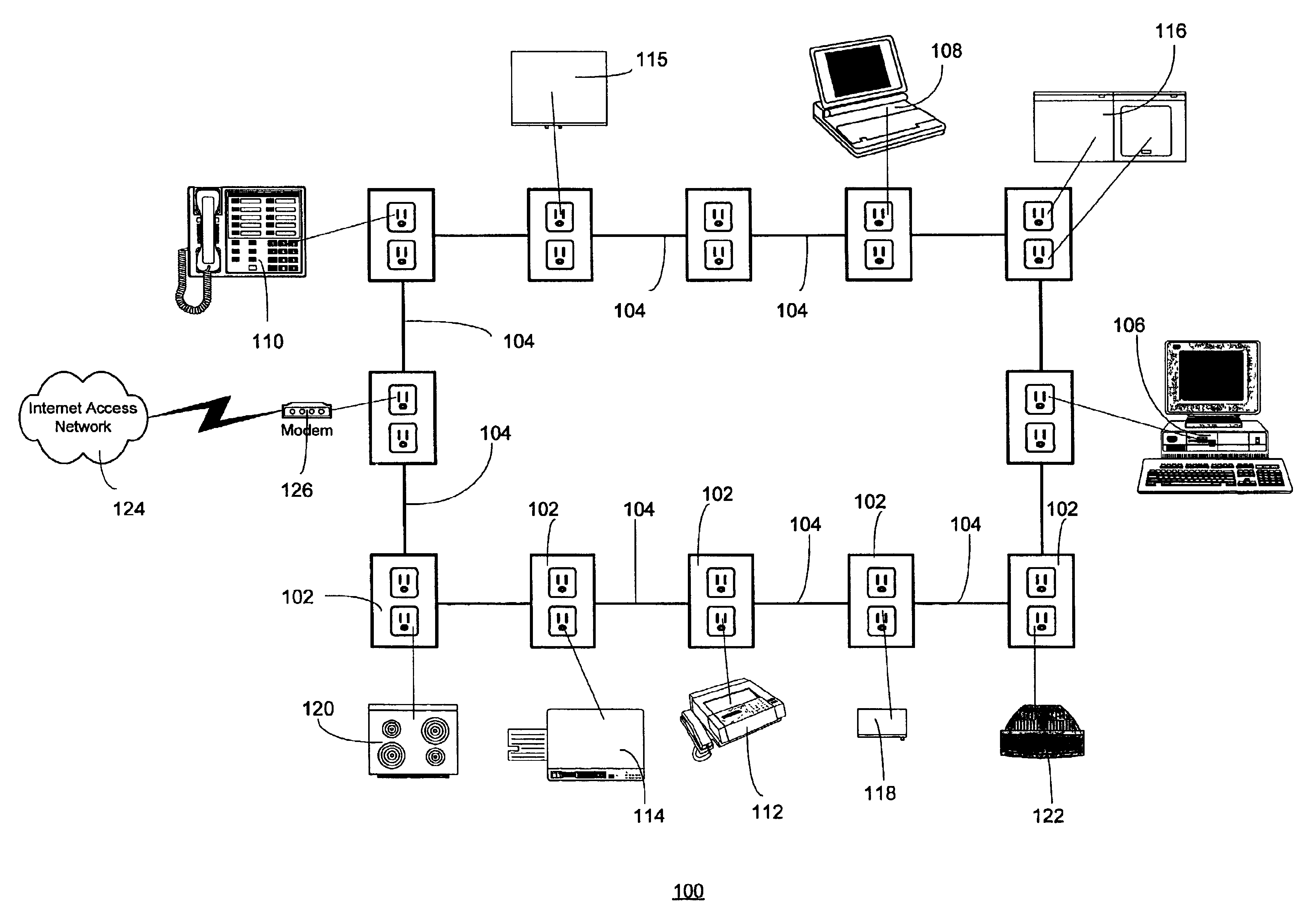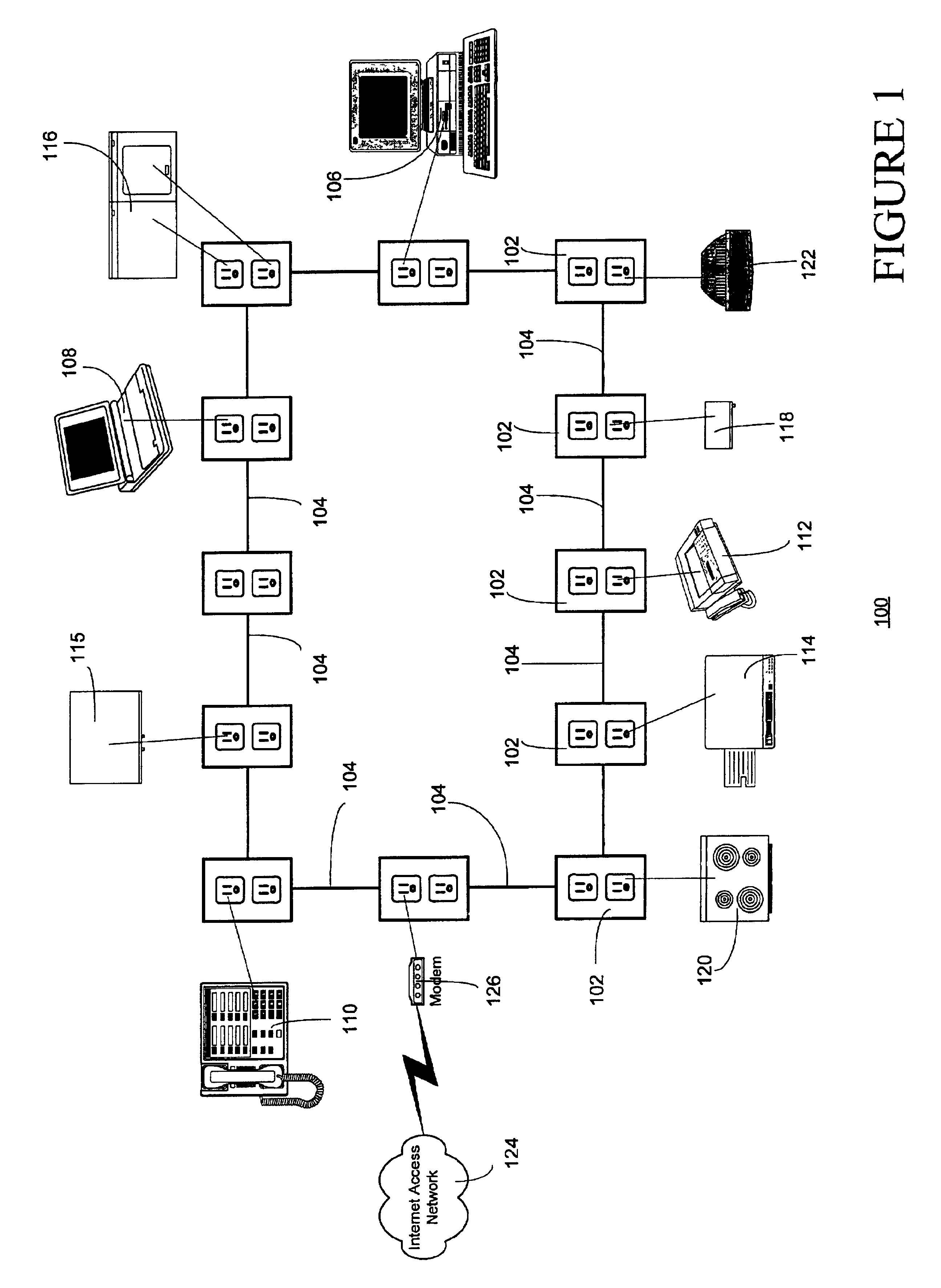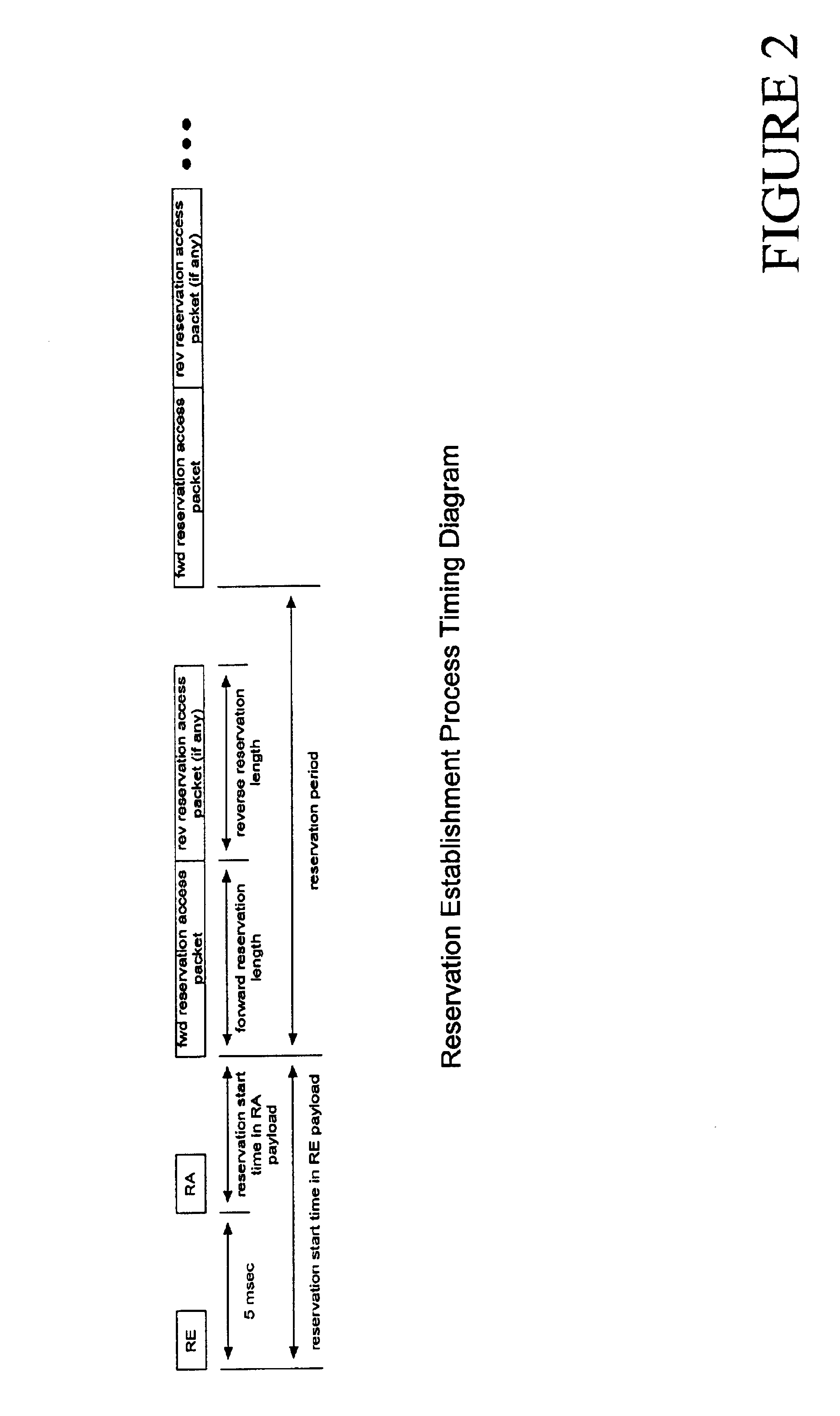Method and apparatus for medium access control in powerline communication network systems
a technology of powerline communication network and medium access control, applied in powerline communication applications, transmission/receiving using protocols, instruments, etc., can solve the problems of powerline networking system, complex and sophisticated home office equipment, and a number of difficult technical challenges, so as to ease the backward compatibility of the powerline system
- Summary
- Abstract
- Description
- Claims
- Application Information
AI Technical Summary
Benefits of technology
Problems solved by technology
Method used
Image
Examples
Embodiment Construction
Throughout this description, the preferred embodiment and examples shown should be considered as exemplars, rather than as limitations on the present invention.
The present invention is a method and apparatus for Medium Access Control (MAC) in powerline communication network systems. As described above, in home powerline ing systems, a single physical medium (the home power lines) is shared by a number of different devices (also referred to herein as “clients”). It may be desirable to allow some clients or devices to freely exchange data between them (for example, clients in a common household). In contrast, it may be desirable to prohibit certain clients from exchanging data with other clients (for example, it may be desirable to prevent a PC in a first house from exchanging data with a PC in a second house). The MAC functions to ensure that the physical medium (the home power lines) is shared in a fair, consistent, and efficient manner (i.e., at a high performance level). The perfo...
PUM
 Login to View More
Login to View More Abstract
Description
Claims
Application Information
 Login to View More
Login to View More - R&D
- Intellectual Property
- Life Sciences
- Materials
- Tech Scout
- Unparalleled Data Quality
- Higher Quality Content
- 60% Fewer Hallucinations
Browse by: Latest US Patents, China's latest patents, Technical Efficacy Thesaurus, Application Domain, Technology Topic, Popular Technical Reports.
© 2025 PatSnap. All rights reserved.Legal|Privacy policy|Modern Slavery Act Transparency Statement|Sitemap|About US| Contact US: help@patsnap.com



